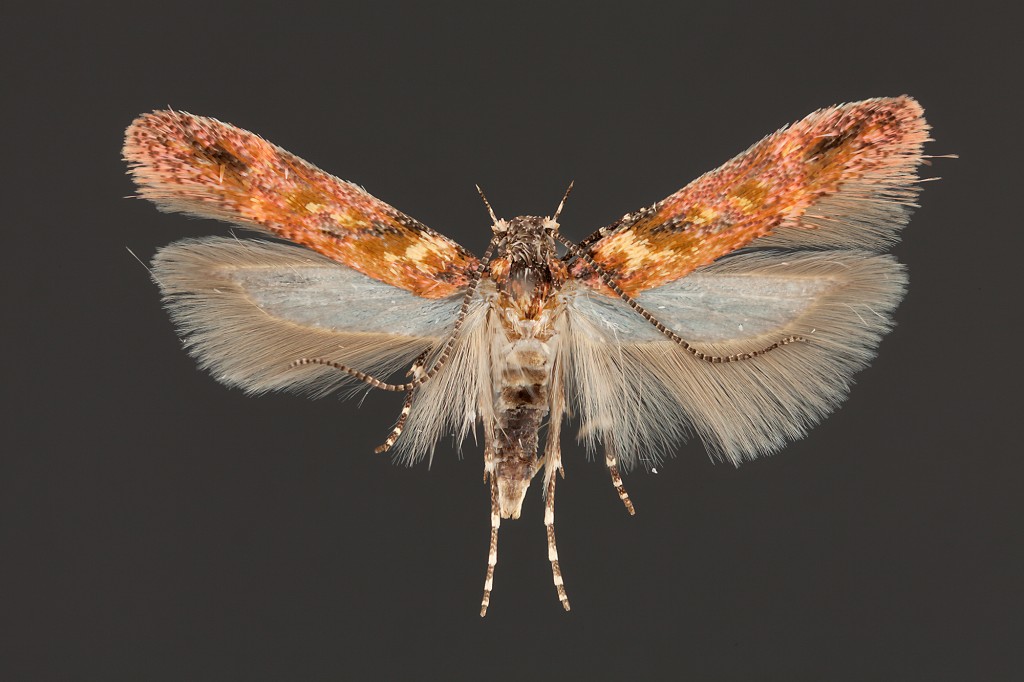Questo lepidottero è un buon esempio di ciò che un sacco di miei falene sono al momento – non identificato! Questo è certamente un Gelechiidae, you can see the large upturned palps on the front of the head, and a finger-shaped projection on the tips of the hindwings. Just about one of the easiest families of microleps to identify. And from a general gestalt perhaps this is in the Gnorimoschemini? If someone recognizes this little guy please let me know, otherwise I’ll attack the literature to try and track down the name. This beautiful moth is from the mountains outside of Prescott, AZ – Luglio 2010. Rather enjoyably, there are so many microlepidoptera that are not easily identified.


Wow. Quante volte stai cercando di id uno dei tuoi tinsy (il mio termine tecnico) falene e si scopre che non è stato ancora descritto?
So che nel mondo vegetale, le specie molto piccoli sono spesso trascurati (no pun intended), così qualcuno che ho incontrato che hanno studiato li abbiamo pubblicati molto facilmente. Solo curioso di sapere se questo vale anche per te / la tua esperienza.
=)
Certamente fa! Ci sono circa 11,000 species of moths described in the US right now – we probably have 3-4,000 left to discover if not more. I have a few dozen specimens that seem to be undescribed but haven’t been verified yet, and I’m revising a genus and will get to describe about 5 new species. And that’s nothing – a colleague is revising a family and is up over 100 new moths already. Once you get into microleps you start finding new ones all over the place!
I understand the attraction of the small and hard to identify – the jewel beetle genus Agrilus fills that role for me. One of the most popular families of beetles among collectors, yet I found an undescribed species right here in Missouri. Difficult taxonomy is a repellent to some and an attractant to others.
I didn’t realise there were so may undescribed in the US. Have all the macro moths now be described? And are there any good guide books? Coming from the UK that has only a couple of thousand moths in total.
Hi Justin- No, we’re a long ways off from saying all the marcos are even described. I know of a few dozen new species of medium to large Noctuidae that are awaiting description. Each year there are just as many published – one of the larger and more impressive was Lithophane leeae described in 2009.
A great book for western moths is “Moths of Western North America, Jerry Powell and Paul Opler.” It’s a text-book sized volume that attempts to cover most representative genera of western moth species (including micros). For eastern moths there is the older “Eastern Moths” da Charlie Covell.